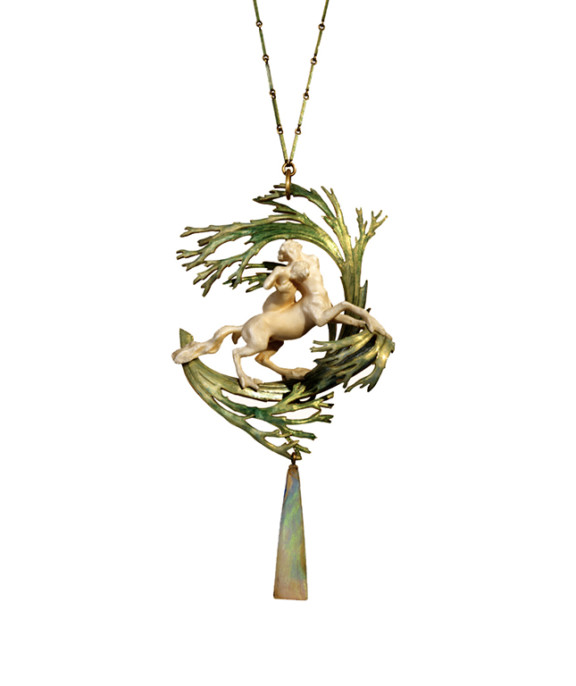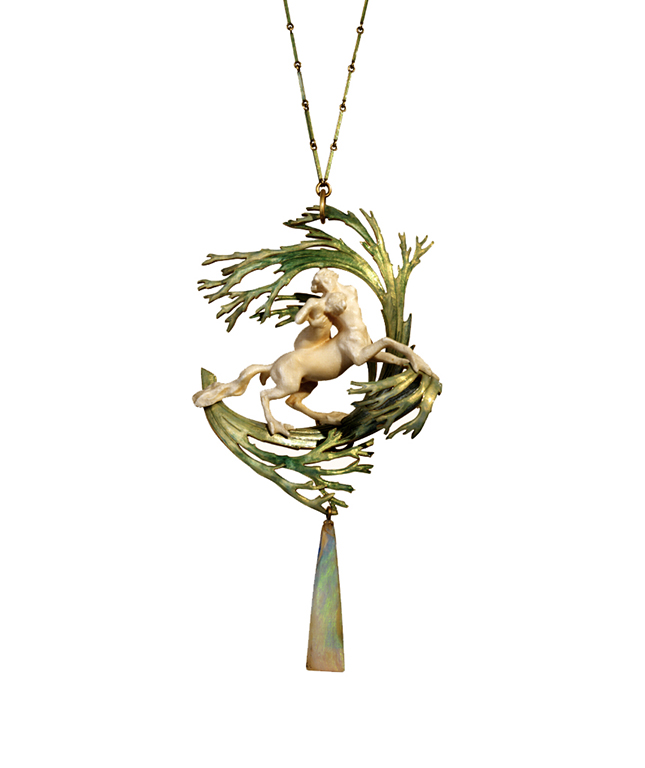
- France, c. 1900–2
- Gold, enamel, ivory and opal
- Inv. 1188
‘The capture of Dejanira’ pendant
To create this piece of jewellery, René Lalique took his inspiration from the theme described in Greek mythology of the rape of Deianira by the centaur Nessus. Both the figure of the abductor and that of the warrior heroine (Hercules’s wife, famous for her great beauty) are executed in ivory in a sculptural composition that provides ample evidence of the artist’s technical skill.
This pendant, which is of considerable size, also features a composition of seaweed in greenish shades of enamelled gold that serves as a support for the group of ivory sculptures. An oblong trapezoidal opal hangs from the seaweed composition. Opal, a semi-precious stone that used to be associated with evil powers, particularly after the publication in 1829 of a novel by Sir Walter Scott in which the author attributed these characteristics to the stone, was rehabilitated by Lalique, becoming one of his favourite materials. The chain from which the piece hangs is composed of a series of small gold bars enamelled in green linked together by small rings that are also made of gold.
Acquired by Calouste Gulbenkian from René Lalique, 1903.
H. (total) 14.7 cm; W. 7.5 cm
Ferreira 1999
Maria Teresa Gomes Ferreira, Lalique. Jóias. Lisbon: Calouste Gulbenkian Museum, 1999, pp. 182–3, cat. 43.
Lisbon 2011
Calouste Gulbenkian Museum. Lisbon: Calouste Gulbenkian Museum, 2011, p. 196, cat. 175.
